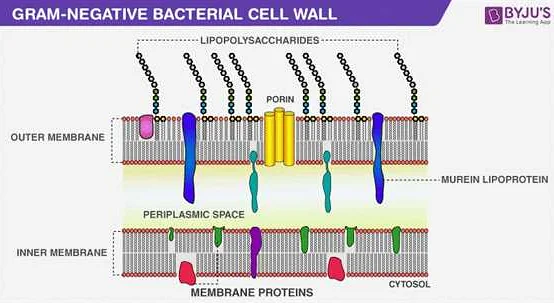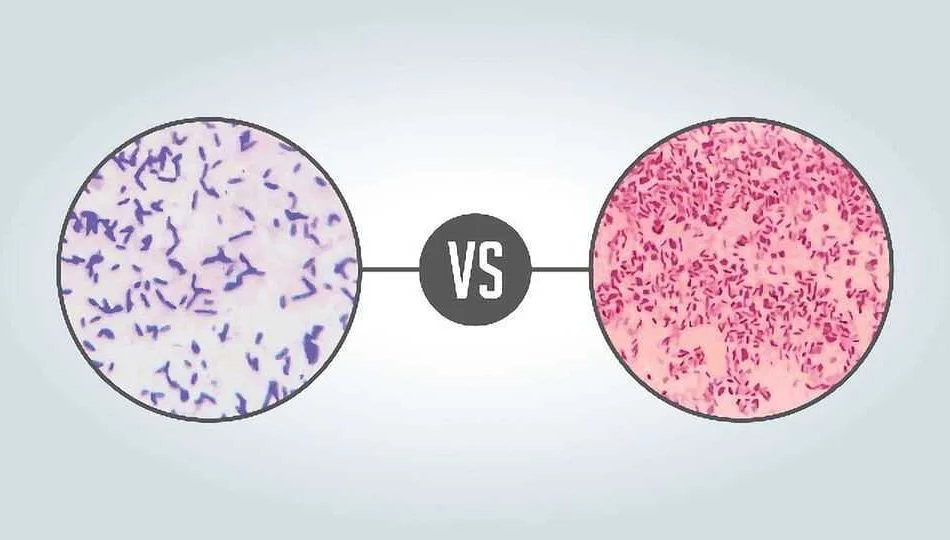General Information About Gram-Negative Bacteria
Содержимое
Gram-negative bacteria are a type of bacteria characterized by their cell wall structure and staining properties. This article provides general information about gram-negative bacteria, including their classification, morphology, and role in human health and disease. Learn about the different types of gram-negative bacteria and their unique characteristics.
Gram-negative bacteria are a diverse group of microorganisms that are known for their unique cell structure and properties. These bacteria have a thin peptidoglycan layer in their cell walls, which makes them stain pink during the Gram staining process. In contrast, Gram-positive bacteria stain purple due to their thick peptidoglycan layer.
Understanding the basics of Gram-negative bacteria is essential in the field of microbiology, as these organisms play a significant role in various diseases and infections. These bacteria can cause infections in humans, animals, and plants, and some of them are known to be highly antibiotic-resistant.
Gram-negative bacteria possess several important structural components that contribute to their unique properties. They have an outer membrane, which contains lipopolysaccharides (LPS) that can trigger an immune response in the host organism. This outer membrane also acts as a barrier, making Gram-negative bacteria more resistant to certain antibiotics and chemicals.
Furthermore, these bacteria have complex mechanisms of antibiotic resistance, including the production of enzymes that can degrade antibiotics, efflux pumps that can expel antibiotics from the cell, and modifications in the target sites of antibiotics. Understanding these mechanisms is crucial for the development of new antibiotics and the management of bacterial infections.
In this article, we will explore the basics of Gram-negative bacteria, their unique properties, and their role in infectious diseases. We will also discuss the challenges associated with treating infections caused by these bacteria and the current research efforts to combat antibiotic resistance. Stay tuned for a comprehensive overview of Gram-negative bacteria!
Overview of Gram-negative Bacteria

Gram-negative bacteria are a type of bacteria that have a unique cell wall structure that differentiates them from gram-positive bacteria. They are characterized by the presence of an outer membrane composed of lipopolysaccharides, which provides an additional layer of protection.
Gram-negative bacteria are found in various environments, including soil, water, and the human body. Some gram-negative bacteria are harmless and even beneficial, while others can cause serious infections and diseases.
One key characteristic of gram-negative bacteria is their ability to resist certain antibiotics and disinfectants. This is due to the presence of efflux pumps and other mechanisms that allow them to expel or modify the antibiotics, making them less effective.
Another important feature of gram-negative bacteria is their role in the development of antibiotic resistance. They can acquire resistance genes through horizontal gene transfer, which enables them to survive and thrive in the presence of antibiotics.
Gram-negative bacteria are also known for their ability to produce endotoxins, which are released upon cell death and can cause inflammation and immune system responses. This can contribute to the severity of infections caused by these bacteria.
Understanding the basics of gram-negative bacteria is essential in the field of microbiology and healthcare, as it helps in the identification, prevention, and treatment of infections caused by these bacteria.
Structure of Gram-negative Bacteria
Gram-negative bacteria are a diverse group of microorganisms known for their unique cell structure. Unlike their Gram-positive counterparts, these bacteria have an additional outer membrane layer that surrounds their peptidoglycan cell wall.
The outer membrane is made up of phospholipids, lipopolysaccharides (LPS), and various proteins. It serves as a protective barrier, preventing the entry of certain substances and providing stability to the cell. The LPS molecules present in the outer membrane are responsible for triggering the immune response in host organisms.
Beneath the outer membrane lies the thin peptidoglycan layer, which provides structural support to the bacteria. The peptidoglycan layer is composed of repeating units of sugar molecules and amino acids, forming a mesh-like structure. This layer is crucial for maintaining the shape and integrity of the bacterial cell.
Within the peptidoglycan layer, Gram-negative bacteria have a periplasmic space, which contains various enzymes and proteins involved in nutrient uptake and cell metabolism. This space acts as a buffer zone between the outer and inner membranes, facilitating the transport of molecules and ions into the cell.
The inner membrane, also known as the cytoplasmic membrane, is the innermost layer of the Gram-negative bacterial cell. It is a phospholipid bilayer that separates the cytoplasm from the external environment. The inner membrane contains numerous transport proteins that regulate the movement of substances into and out of the cell.
Overall, the unique structure of Gram-negative bacteria plays a crucial role in their ability to survive in diverse environments and interact with their hosts. Understanding this structure is fundamental in developing effective strategies to combat Gram-negative bacterial infections.
Importance of Gram-negative Bacteria

Gram-negative bacteria play a crucial role in various aspects of our lives, from health to the environment. These bacteria have a unique cell wall structure that gives them specific characteristics and abilities.
One of the key contributions of Gram-negative bacteria is their involvement in human health. They can be both beneficial and harmful to humans. Beneficial Gram-negative bacteria reside in the human gut and help with digestion, vitamin synthesis, and immune system regulation. Some strains of Gram-negative bacteria are even used in probiotics to promote gut health.
However, Gram-negative bacteria can also cause serious infections in humans. They are known for their ability to develop resistance to antibiotics, making them a significant threat in healthcare settings. Gram-negative infections, such as urinary tract infections, pneumonia, and bloodstream infections, can be difficult to treat due to the limited number of effective antibiotics.
In addition to their impact on human health, Gram-negative bacteria also play a vital role in the environment. They are involved in the decomposition of organic matter and nutrient cycling. Some Gram-negative bacteria are capable of breaking down pollutants and toxins, helping to purify the environment.
Moreover, Gram-negative bacteria are used in various industrial processes. They are utilized in the production of bioplastics, biofuels, and enzymes. These bacteria have the ability to metabolize diverse compounds and produce valuable products that contribute to a greener and more sustainable industry.
| E. coli | Used in genetic engineering and biotechnology |
| Pseudomonas aeruginosa | Involved in bioremediation and natural product synthesis |
| Salmonella | Causes foodborne illnesses |
In conclusion, Gram-negative bacteria are not only a significant player in human health and disease but also have a substantial impact on various aspects of the environment and industry. Understanding their role and characteristics is essential for developing effective strategies to combat infections and harness their potential for beneficial applications.
Common Gram-negative Bacterial Infections
Gram-negative bacteria are a diverse group of microorganisms that can cause a wide range of infections. These bacteria have an outer membrane that makes them more resistant to antibiotics and other treatments. Understanding the common gram-negative bacterial infections can help in their prevention and treatment.
1. Urinary tract infections (UTIs): Gram-negative bacteria, such as Escherichia coli, are the most common cause of UTIs. These infections can occur in the bladder, urethra, ureters, and kidneys. Symptoms may include pain or burning during urination, frequent urination, cloudy or bloody urine, and lower abdominal pain.
2. Respiratory tract infections: Gram-negative bacteria, including Klebsiella pneumoniae and Pseudomonas aeruginosa, can cause respiratory tract infections such as pneumonia, bronchitis, and sinusitis. Symptoms may include cough, chest pain, shortness of breath, fever, and fatigue.
3. Gastrointestinal infections: Certain gram-negative bacteria, like Salmonella and Campylobacter, can cause gastrointestinal infections. These infections are often contracted through contaminated food or water and can result in symptoms such as diarrhea, abdominal pain, nausea, and vomiting.
4. Bloodstream infections (sepsis): Gram-negative bacteria, such as E. coli and Klebsiella species, can enter the bloodstream and cause severe infections. This can lead to sepsis, a life-threatening condition characterized by fever, chills, rapid heartbeat, confusion, and organ dysfunction.
5. Wound infections: Gram-negative bacteria, including Pseudomonas aeruginosa and Acinetobacter baumannii, can cause wound infections. These infections commonly occur in hospitals or healthcare settings and may result in delayed wound healing, redness, swelling, and pus formation.
6. Meningitis: Certain gram-negative bacteria, like Neisseria meningitidis, can cause meningitis, an infection of the membranes surrounding the brain and spinal cord. Symptoms may include severe headache, stiff neck, fever, confusion, and sensitivity to light.
It is important to seek medical attention if you experience symptoms of a gram-negative bacterial infection. Prompt diagnosis and appropriate treatment can help prevent complications and promote recovery.